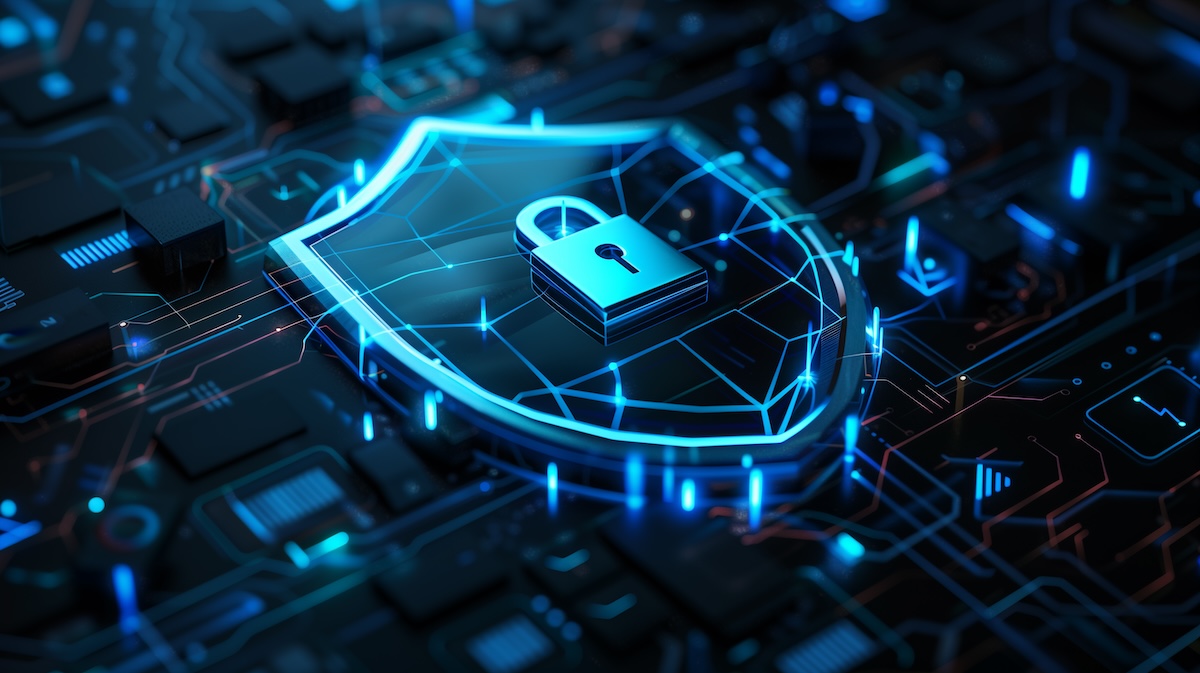Securing Industrial Automation: A Comprehensive Guide to IEC 62443-4-2
Cybercriminals are increasingly targeting critical industries, with the energy sector and manufacturing being prime targets. Research reveals that the energy grid is especially susceptible to various cyberattacks due to aging infrastructure, complex operations, and the expanding intersection of operational technology (OT) and information technology (IT).
Similarly, the manufacturing sector experiences nearly 25% of all cyberattacks on major industries. These attacks can cause significant disruptions to production lines, compromise sensitive data, and result in substantial financial losses.
Energy and manufacturing operations depend on interconnected and automated systems, making them particularly vulnerable to cyber threats that can spread throughout the supply chain, impacting not just the targeted company but also its partners and customers.
As the threat landscape expands, organizations that rely on industrial automation and control systems (IACS) require comprehensive guidance to protect themselves. The IEC 62443 series of standards offers essential guidelines for security leaders tasked with safeguarding automated components in industrial environments.
In this article, we’ll explore IEC 62443-4-2, which focuses on the technical security requirements for IACS components.
Understanding IEC 62443-4-2
The International Electrotechnical Commission (IEC) publishes standards for a wide array of electrical and electronic devices and systems, including those supporting industrial operations.
The IEC 62443 standard series provides thorough guidance for securing IACS, with each part addressing specific security aspects:
• Part 1: Covers overall cybersecurity concepts and methodologies for IACS, outlining foundational security requirements and risk management processes.
• Part 2: Details system security requirements for IACS, including physical security, technical security measures for communication networks, and secure system integration.
• Part 3: Focuses on operational security for IACS, providing secure operation procedures, including user management, incident response, and vulnerability management.
• Part 4: Delves into component security requirements, with IEC 62443-4-2 providing detailed technical security requirements for individual IACS components, such as embedded devices, network components, software applications, and host devices.
The Importance of IEC 62443-4-2
The increasing frequency and sophistication of cyberattacks on critical infrastructure underscore the need for IEC 62443-4-2. In 2023, critical infrastructure worldwide faced attacks approximately every 13 seconds. IEC 62443-4-2 offers security leaders a framework to guide their efforts and defend against these threats.
IEC 62443-4-2 significantly influences product development and lifecycle management by guiding the security of IACS components throughout their entire lifecycle. This includes software updates, patch management, and end-of-life processes. The standard mandates a security lifecycle incorporating regular security audits and risk assessments.
IEC 62443-4-2 ensures legal and regulatory compliance across various critical sectors:
• Energy and Utilities: Protects control systems, preventing outages and ensuring a continuous power supply.
• Water and Wastewater Management: Secures the safety and reliability of treatment and distribution systems.
• Manufacturing: Safeguards automation processes, especially in critical industries like automotive and pharmaceuticals.
• Oil and Gas: Enhances operational technology security.
• Transportation (Rail and Air): Improves control system safety and efficiency.
• Healthcare: Secures medical device manufacturing and healthcare infrastructure.
Moreover, IEC 62443-4-2 enables the secure integration of emerging technologies like IoT and AI into industrial automation systems, which is crucial for protecting critical infrastructure in healthcare, transportation, and water management.
Beyond compliance, adopting this standard enhances product marketability by building consumer trust and establishing a competitive advantage. As cybersecurity awareness grows, compliance with IEC 62443-4-2 demonstrates a proactive security posture, essential for sectors prioritizing reliability and safety.
Key Requirements of IEC 62443-4-2
IEC 62443-4-2 establishes a comprehensive security framework for IACS, mandating a range of controls across various domains and encompassing the entire lifecycle of IACS components:
• Secure Development Lifecycle (SDL): Emphasizes secure development from the outset, integrating security throughout product development stages. Rigorous security testing and validation at various stages ensure that security controls are functional and the product’s integrity is reinforced from conception to deployment.
• Patch Management: Requires regular security updates through an efficient patch management process, enabling organizations to swiftly address critical software vulnerabilities.
• Operational Security:
- Access Control & Authentication: Stresses robust authentication and authorization mechanisms, ensuring only verified and authorized users access IACS components, adhering to the principle of least privilege.
- Physical Security: Integrates physical security measures to prevent unauthorized physical access and protect against attacks targeting air-gapped systems.
• Data Protection:
- Encryption: Focuses on encryption to safeguard data confidentiality and integrity, ensuring sensitive information remains secure from unauthorized access or interception.
- System Integrity: Implements controls to maintain system integrity, protecting against unauthorized changes and malware. This may involve robust antivirus (AV) for malware detection or endpoint detection and response (EDR) to identify and alert administrators to unauthorized changes.
• Resilience & Incident Management:
- System Resilience: Designs components to be resilient against cyberattacks, ensuring they can maintain secure operations even under threat.
- Incident Detection & Response: Requires robust incident detection and response capabilities to quickly identify security incidents and mitigate potential damage or disruption.
• Operational Excellence:
- Configuration Management: Ensures that any changes to IACS components are intentional and traceable, minimizing the risk of unintended security vulnerabilities.
- Documentation & Training: Provides comprehensive security documentation and training, equipping those responsible for IACS with the knowledge and tools required to maintain secure configurations and manage operations effectively.
By implementing these comprehensive security controls, IEC 62443-4-2 empowers organizations to build robust and resilient IACS environments.
Challenges in Meeting IEC 62443-4-2 Compliance
Implementing IEC 62443-4-2 presents significant technical challenges, especially for organizations lacking extensive cybersecurity expertise. Integrating advanced security features like encryption, authentication, and resilience into existing systems can be complex and resource-intensive.
Achieving IEC 62443-4-2 compliance also presents substantial resource challenges, particularly for small and medium-sized enterprises (SMEs). Compliance demands investments in time, expertise, and finances, which can be particularly difficult for SMEs.
• Resource Constraints for SMEs: Allocating sufficient resources can be challenging. Hiring additional cybersecurity staff might be cost-prohibitive in the long run, while contractor or consultant fees can strain budgets.
• Legacy Systems: Integrating security features into legacy systems not designed with modern cybersecurity threats in mind poses technical difficulties and financial burdens due to required upgrades or retrofits.
• Workforce Expertise: The limited pool of cybersecurity professionals creates a significant talent gap. Current estimates suggest the workforce can address only 74% of cybersecurity needs, with an even larger gap in specialized IACS expertise.
Training current staff to understand and implement IEC 62443-4-2 principles can help bridge this gap but requires substantial investment. However, this strategy may not always be feasible, as employees might lack the foundational skills needed to effectively utilize this specialized knowledge.
Strategies for Meeting IEC 62443-4-2 Compliance
Achieving IEC 62443-4-2 compliance can be streamlined by implementing these strategic solutions:
• Secure Development Lifecycle (SDL): Develop and implement a robust SDL for IACS components, integrating cybersecurity considerations throughout the development process. This ensures strong security measures are embedded from the very beginning.
• Building Expertise: Assemble a knowledgeable team or collaborate with trusted vendors experienced in IEC 62443-4-2. Ongoing training in cybersecurity best practices is essential, focusing on implementing and managing secure access controls within these standards.
• Operational Security: Robust access control and incident management are critical for operational compliance. Strong authentication and authorization mechanisms are essential, leveraging encryption to safeguard against unauthorized access. Developing a comprehensive incident response plan ensures swift responses to security breaches, minimizing damage and service disruptions.
• Proactive Security Posture: Maintain a proactive approach to security by implementing regular system updates, patch management, and thorough risk assessments. This helps address vulnerabilities and adapt to evolving threats. Integrating PKI certificate management into your risk management strategy is crucial. Regularly updated and renewed certificates ensure the integrity and confidentiality of communication within the IACS environment.
• Collaboration & Supply Chain Security: Collaborate closely with suppliers and partners to ensure a compliant digital supply chain. Regular security audits are vital to uphold these standards consistently. This collaboration should involve adhering to PKI standards and conducting audits to confirm PKI implementation across the supply chain. This ensures that all code and libraries originate from trusted sources and have not been tampered with during transit, maintaining overall security and integrity.
By adopting these strategies, organizations can navigate the path toward achieving IEC 62443-4-2 compliance and significantly enhance their IACS security posture.
Embracing IEC 62443-4-2
Incorporating PKI within the framework of IEC 62443-4-2 is essential for solidifying security in IACS. Integrating PKI establishes a foundational layer of protection, enhancing key processes like authentication, encryption, and digital signatures. This integration is vital across various security levels and implementation stages, ensuring a structurally sound security program within the IACS environment.
Automating PKI processes within IACS environments streamlines security management, simplifying certificate issuance, renewal, and revocation, thus bolstering security measures while significantly reducing administrative efforts. Such streamlining supports organizations in maintaining robust and efficient IACS operations.
Find out more in this webinar on demand.
This article appeared first here. Read the original version


